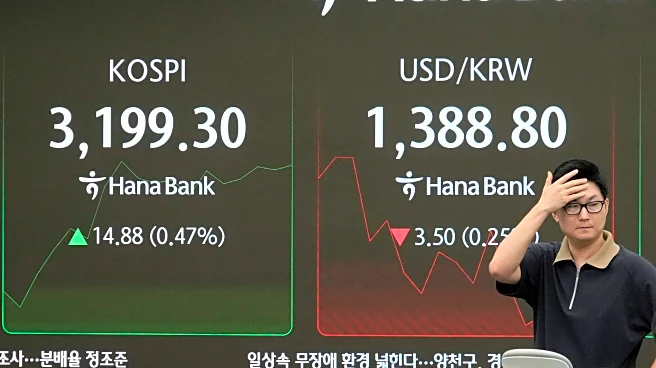What's Happening?
Uber Technologies' inclusion in the S&P 500 in December 2023 marked a significant transition from a high-growth disruptor to a mainstream market staple. This strategic move by S&P Dow Jones Indices reflected Uber's financial resilience and catalyzed a surge in its market valuation. The inclusion boosted the industrials sector's weight in the index by 0.3%, requiring ETFs and mutual funds to purchase approximately $12.7 billion in Uber shares, elevating its market capitalization to $127 billion. Uber's first-ever operating profit in Q2 2023 and consistent adjusted EBITDA growth aligned with S&P's financial viability criteria, attracting a broader base of investors. In September 2025, Uber further solidified its institutional relevance by joining the S&P 100, replacing Charter Communications, reflecting its benchmark status for sustainable growth in the digital economy.
Why It's Important?
Uber's inclusion in major indices like the S&P 500 and S&P 100 signifies institutional validation and enhances its market visibility. This move provides a tailwind for liquidity and valuation, attracting passive and active investors constrained to index constituents. However, it also comes with heightened expectations and exposes Uber to broader market forces. Despite initial liquidity boosts, Uber's stock has faced volatility due to macroeconomic concerns, highlighting the fragility of risk-on trades. The company's ability to maintain its market positioning will depend on navigating these pressures while delivering on financial guidance, impacting its long-term trajectory and investor sentiment.
What's Next?
Uber's future market positioning will depend on its capacity to sustain profitability and adapt to macroeconomic cycles. As the company transitions from a high-growth story to a mature player, its ability to deliver on its Q2 2025 guidance of $45.75 billion to $47.25 billion in gross bookings will be crucial. Investors will closely monitor Uber's operational and financial discipline to assess whether its index representation remains a strategic advantage or becomes a liability in a downturn.
Beyond the Headlines
Uber's index inclusion highlights the evolving landscape of transportation and logistics, with implications for the gig economy and digital infrastructure. As a tech-industrial hybrid, Uber's role in diversifying the S&P 500's sector composition underscores the intersection of technology and traditional industrials. This shift may influence how index providers align with companies exemplifying innovation and scalability, impacting future index compositions and investment strategies.













